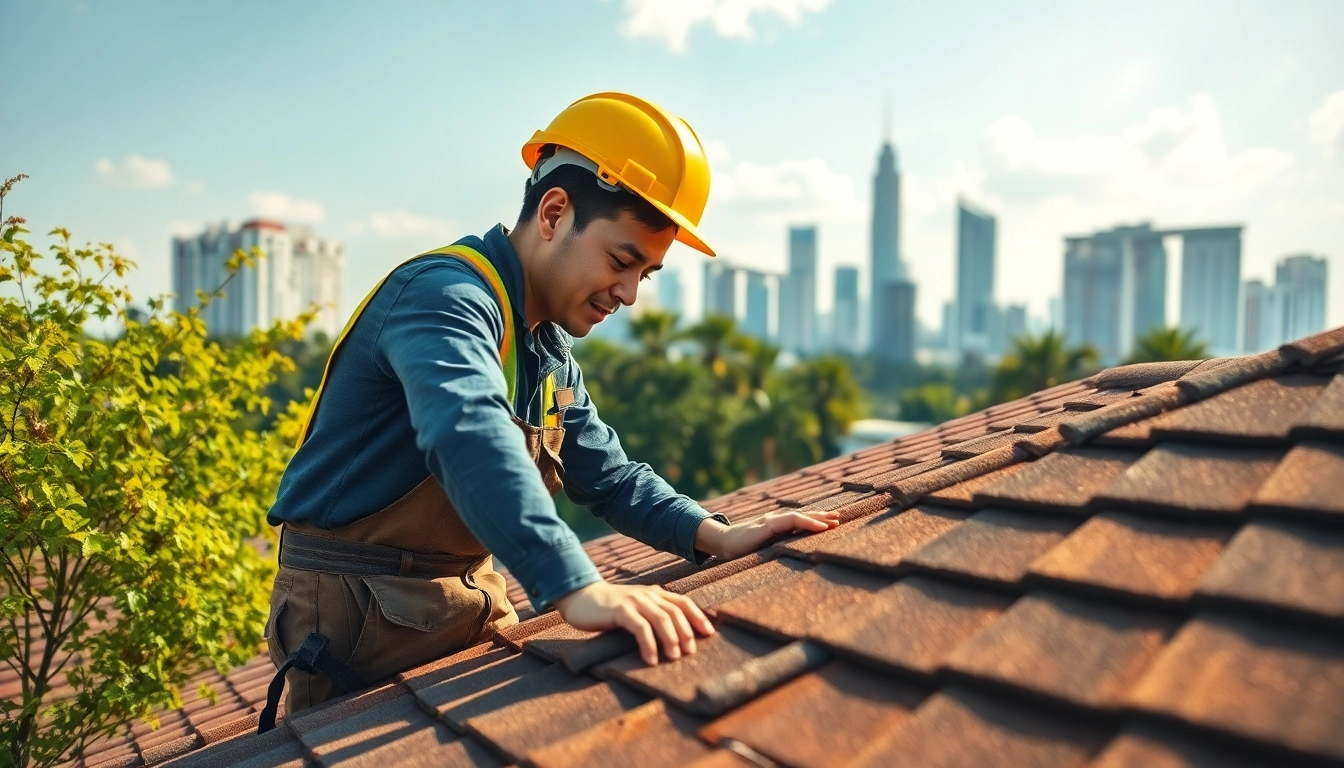Elevate Your Home with Expert Kitchen Remodel Franklin TN Services

Understanding the Importance of a Kitchen remodel Franklin TN
The kitchen serves as the heart of a home, a place where families gather to share meals, stories, and memories. As lifestyles change, so do the needs and aesthetics of our kitchens. A Kitchen remodel Franklin TN can not only improve the functionality of the space but also enhance the overall value of your home. This transformation can encompass everything from updating appliances to rethinking the entire layout. By understanding the importance of a kitchen remodel, homeowners can create a space that reflects their personal style while meeting their cooking and entertaining needs.
Defining Your Space and Needs
The first step in any kitchen remodel is to define the space you are working with and assess your specific needs. This involves analyzing how you currently use your kitchen and identifying any pain points. Do you need more counter space for meal prep? Is your storage inadequate? Perhaps you need a more open layout for entertaining guests. Make a list of must-haves and nice-to-haves to ensure that your remodel meets your particular lifestyle requirements. Remember, the goal is to create a functional, comfortable, and aesthetically pleasing space.
Analyzing Kitchen Layout for Efficiency
Efficiency should be a guiding principle in any kitchen remodel. The layout directly impacts how you move around in the kitchen and carry out kitchen tasks. The most common kitchen layouts include U-shape, L-shape, galley, and open-plan kitchens. Each configuration comes with its unique advantages and disadvantages. Consider your cooking habits, the size of your family, and how often you entertain when selecting the layout. A well-thought-out layout can significantly boost your kitchen’s functionality and enhance your cooking experience.
Budgeting for Your Kitchen Remodel Franklin TN
A well-planned budget is crucial when embarking on a kitchen remodel. Begin by establishing a realistic budget based on how much you can comfortably spend. It’s essential to allocate funds for all aspects of the remodel, from design and materials to labor and permits. An emergency reserve of about 10-15% of your total budget can help cover unforeseen expenses that may arise during the project. Remember, investing in quality materials and skilled labor can save you money in the long run by minimizing maintenance costs and ensuring a longer lifespan for your kitchen.
Design Trends for Kitchen remodel Franklin TN
The design of your kitchen plays a significant role in creating an inviting and functional space. Keeping updated with design trends can inspire you to create a kitchen that stands the test of time.
Popular Styles: Modern, Rustic, and Traditional
Kitchen design styles are as varied as the homeowners who inhabit them. Modern kitchens often feature clean lines, minimalistic designs, and a neutral color palette, creating an airy feel. Rustic kitchens embrace warmth and charm through natural materials like wood and stone, offering a cozy ambiance. Traditional kitchens highlight classic elements, such as raised-panel cabinetry and ornate details, giving a sense of nostalgia and comfort. Choosing a style that resonates with you will not only provide aesthetic pleasure but also create a sense of belonging in the space.
Choosing Color Schemes for a Fresh Look
Color dictates the mood and ambiance of your kitchen. Light colors can make a small space feel larger and more open, while darker tones add a dramatic touch. Popular trending colors include soft neutrals, bold blues, and rich greens. Consider using color strategically, such as on an accent wall, cabinetry, or kitchen island, to create focal points and visual interest. Don’t forget about how color can influence kitchen lighting; warmer tones often enhance the inviting feel of the kitchen, making it a perfect gathering spot.
Innovative Storage Solutions
Increasing storage efficiency is a critical focus for many kitchen remodels. Innovative solutions can help maximize every square inch of space, making even the smallest kitchens highly functional. Consider adding pull-out shelves, lazy Susans, or vertical dividers in cabinets for optimal organization. Other popular options include incorporating built-in storage solutions like benches with storage compartments, custom cabinetry that reaches the ceiling, and end-cap shelving for easy access to frequently used items. With the right storage solutions, your kitchen can feel less cluttered and more efficient.
Planning Your Kitchen remodel Franklin TN: Steps to Success
Effective planning is key to simplifying the kitchen remodel process. A well-laid plan ensures that all aspects are considered and that the project flows smoothly.
Creating a Timeline for Your Project
Establishing a timeline is essential when planning your remodel. Begin by outlining the key phases, including design, material selection, demolition, construction, and final touches. Make sure to set realistic deadlines for each stage to avoid frustration. Additionally, accounting for potential delays due to supply chain issues or contractor availability is essential. Keeping an open line of communication with your chosen professionals can help maintain momentum and keep the project on track.
Hiring the Right Professionals
Choosing the right team for your kitchen remodel is crucial to its success. Conduct research to find qualified contractors, designers, and specialists who have experience in kitchen renovations. Check customer reviews, ask for references, and review their portfolios to ensure their design style aligns with your vision. Having experienced professionals can save you time, stress, and potentially costly mistakes. Don’t hesitate to ask questions or clarify your expectations to establish a productive working relationship.
Selecting Quality Materials
When it comes to materials, quality should always take precedence. Upgrading to higher-quality materials can often lead to a better return on your investment. From countertops to cabinets, selecting durable and aesthetically pleasing materials can enhance your kitchen’s look and functionality. Focus on selecting products that are resistant to wear and tear, easy to clean and maintain, and stylish. Collaborate with your designers or contractors to make informed choices based on your budget, lifestyle, and design goals.
DIY vs. Professional Kitchen remodel Franklin TN
Whether to embark on a DIY kitchen remodel or hire professionals is a decision many homeowners face. Understanding the pros and cons of both approaches can help you make the best choice for your project.
Benefits of Hiring Experts
Hiring professionals for your kitchen remodel can significantly ease the burden of the project. Experts bring a wealth of knowledge, experience, and skills that can help avoid common pitfalls that first-timers may encounter. They can also provide valuable insights into the latest trends, building codes, and safety regulations, ensuring that your remodel meets all necessary guidelines. Furthermore, professionals are equipped to handle unexpected challenges that may arise, providing you the peace of mind to focus on other aspects of your life while your kitchen comes to life.
When to Consider DIY Options
On the flip side, a DIY approach can save money and allow homeowners to personalize their space more intimately. Simple tasks like painting, cabinetry refinishing, or installing a backsplash can often be accomplished with a little research and patience. If you’re skilled in home improvement projects and have a clear vision of your remodel, a DIY project may be a fulfilling endeavor. However, it is vital to assess the scope of your project honestly; larger scale undertakings, such as plumbing or electrical work, typically require professional expertise.
Common Mistakes to Avoid in DIY Projects
While DIY projects can be rewarding, they come with their own set of challenges. Common pitfalls include underestimating the time and effort required, cutting corners on materials, and failing to account for necessary permits. Additionally, miscalculating dimensions can lead to costly errors. To avoid these issues, do thorough research, create detailed plans, and, when in doubt, consult with a professional for guidance. A little foresight can go a long way in ensuring your DIY kitchen project does not become overwhelming.
Measuring Success: Post-Remodel Considerations
Once your kitchen remodel is complete, reflecting on the project’s success is crucial. Evaluating functionality, aesthetics, and overall satisfaction are important steps in ensuring you’ve achieved your remodeling goals.
Evaluating Functionality and Design
After completing your remodel, take time to assess how the new layout and features support your daily activities. Are your work areas more efficient? Do you have ample storage? Take note of any adjustments that need to be made for improvement. This evaluation not only provides immediate feedback but can also serve as valuable insight for future home improvement projects.
Long-term Maintenance Tips
To preserve the beauty and functionality of your remodeled kitchen, regular maintenance is key. Follow manufacturer guidelines for cleaning and maintaining appliances and surfaces. Establish a routine for checking plumbing and electrical fixtures to prevent minor issues from escalating into major repairs. Additionally, consider investing in high-quality cleaning products that respect the materials used in your kitchen, ensuring their longevity.
Realizing the ROI of Your Kitchen remodel Franklin TN
A kitchen remodel typically ranks as one of the top home improvement projects in terms of return on investment. By evaluating your kitchen’s updated features and functionality, you can assess its value not only to your daily life but also when it comes time to sell. Highlighting modern upgrades, enhanced layouts, and smart storage solutions during showings can attract potential buyers and increase the sale price. Moreover, creating a kitchen tasteful enough to draw interest from buyers can have lasting returns down the line.








